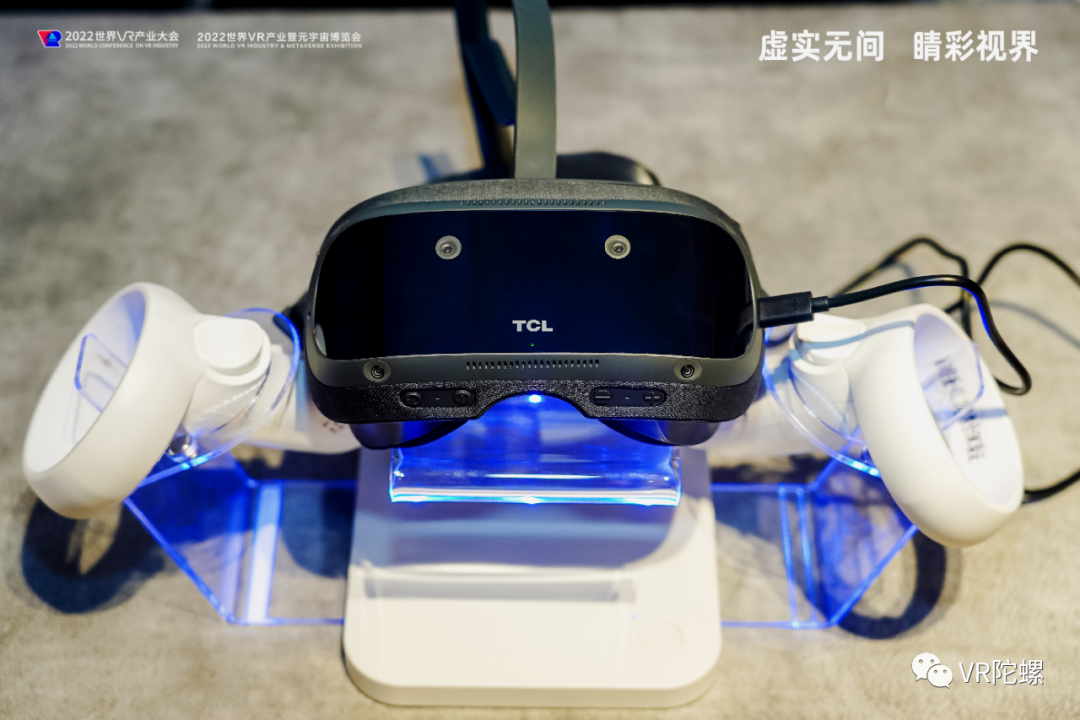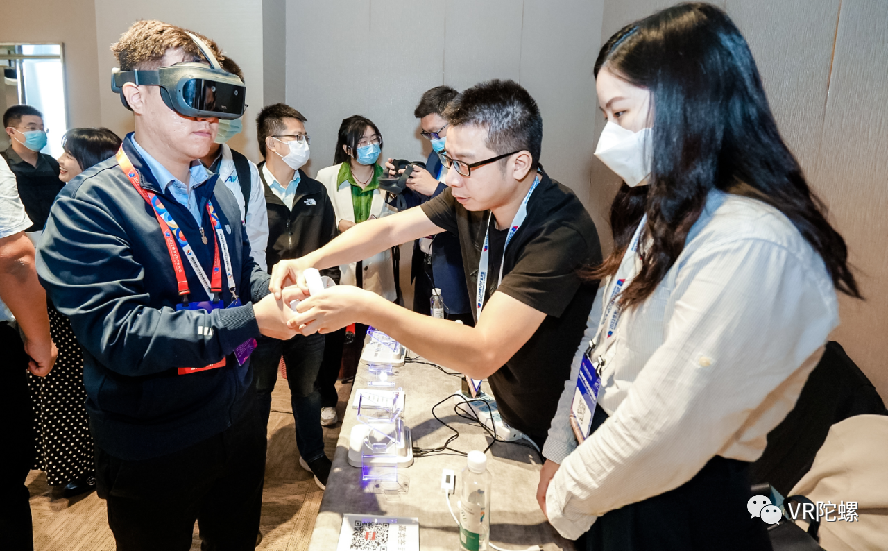Eddie-Griffin
Banned

对话TCL智慧移动屏产品线总经理倪永卿:TCL定义“屏宇宙”,VR/AR为“第四块屏” - 数藏之家
文/VR陀螺 豌豆 “VR很重要,这是我们第二增长曲线,而且我们赶上了非常好的时机。”TCL智慧移动屏产品线总经理倪永卿坦言道。 就在刚刚结束的南昌
 www.f6ex.com
www.f6ex.com
At the just-concluded Nanchang World VR Industry Conference, TCL showed its latest VR all-in-one product for the first time, and announced its related strategic plan, which became the focus of the industry.
The times make heroes, take advantage of Dongfeng's TCL, why choose this opportunity to enter VR, and how do you plan to promote it next? VR Gyro and Ni Yongqing, General Manager of TCL Smart Mobile Display Product Line, conducted a discussion on TCL VR's future strategy and industry development trends.
Defined as "the fourth screen", TCL: VR is the second growth curve
On November 13th, TCL held a new VR all-in-one machine product exchange meeting at the Nanchang World VR Industry Conference, and demonstrated its first VR all-in-one machine—TCL V1 for the first time.
First of all, at the display level, TCL V1 is equipped with the highest PPI 1512 Fast-LCD display in the industry at this stage. The screen size is 2.1 inches, developed and produced by TCL Huaxing Optoelectronics, with a resolution of nearly 5K for both eyes (2280 x 2280 per eye), and the display effect is exquisite and excellent ;
In terms of optics, the Pancake optical module developed by TCL Industrial Research Institute is adopted, and the FOV can reach up to 108°;
Achieving a large field of view on a small screen is one of the current industry challenges. For example, although Quest Pro uses a 2.48-inch screen, its field of view is only 106 degrees; The high-speed Pancake lens, combined with the reasonable focal length distribution of the optical design, achieves a large FOV of 108 degrees.
In addition, TCL V1 also supports 0-700-degree diopter adjustment and binocular color VST (Video See Through color perspective), providing more possibilities for content development. In particular, the full-color VST realized by dual RGB cameras is one of the biggest difficulties.
"Including how the binocular camera chooses the angle, stacks, and positions, and how to use the algorithm to identify the depth of field after the calibration distance between the binoculars and the images of the two cameras. And further, The scanning method constructs the corresponding layers of the depth of field data, and then constructs the 3D scene. After that, it is necessary to consider reducing the bandwidth and load to control the heat dissipation of the whole machine. Extending to the back, it actually involves the heat dissipation scheme of the entire machine. It can meet its requirements, even when it includes meeting the heat dissipation scheme, what kind of method is used by active cooling components to reduce noise, and then control its overall performance. So this is a series of complex system engineering. During the dialogue, Yu Yang, head of TCL VR, made further supplements to the technical part of the whole machine. He believed that every link in the VR equipment affects the whole body, and TCL must have full-link capabilities to make a good product. .
So not only the screen capabilities in the early stage, TCL has also accumulated many years of vertical integration capabilities of the whole machine, optical-mechanical self-development capabilities, VST algorithms and 6DoF algorithms.


Here are the specs that have been gathered and translated from other places and the article(s),
2280*2280 per eye resolution
90Hz 4.5ms screen latency
LCD with slightly better color gamut than index but worse than vive.
108 degrees claimed FOV. (Valve index 104-108, Quest 2 93-97, Quest Pro 95-106)
Pancake lenses with diopter adjustment for myopia, up to 7 diopters.
They claim they have some new fancy coating that makes their lenses to have less ghosting than the competition.
Automatic IPD adjustment with eye-tracking cameras.
It is a standalone headset.
The battery is on the back.
tracking cameras, 2 RGB passthrough cameras, 2280x2280 resolution, 108°fovpancake lenses, 0-700° diopter adjustment, TCL CSOT fast LCD display, refresh rate 90Hz, NTSC color gamut 70%, response time 4.5ms, 1512ppi. Available product colors: black, digital cyan, apricot, and glacial blue
For the problem of ghosting, TCL uses PBS to replace the traditional spectroscopic film, which improves the light energy utilization rate of the system.
6DoF SLAM latency is 8ms.
It supports TVs, tablets, computers and other devices connected to the same Wifi to share the same screen with one button, so that VR is no longer a closed space for one person.
No-code content creation tool "Creator". The lack of high-quality content is a major pain point in the industry, and in addition to professional PGC, the addition of UGC can quickly expand the efficiency of content production, and this is also the direction of major giants. It is understood that TCL's "Creator" will provide a complete set of content production engine solutions to meet the needs of industry users, and quickly increase the number of content.
One-drag multi-screen software. Central control is one of the core functions in industry applications. According to reports, users can use computers, tablets or head-mounted displays to control multiple VR all-in-one devices, so as to realize perspective and content viewing management in many scenarios such as education, teaching, training, and display.
TCL's strategy is usually to undercut the competition and I don't think that will change much here. Especially given their connections domestically in their home country.
Based on these specs and claimed features we are looking at potentially one of the best and most acessible headsets out there. Multiple VR sets can share the same screen based on this information.
It can be used as a standalone headset, is wirelesss, and can also support TV's Tablets, and PC's as well as other devices. 2280x2280 per eye, FOV similar to the Index, new coating for less ghosting, 90Hz, 4.5ms response, and multiple colors.
The biggest thing here is the "creator" toolset which TCL thinks will help resolve the shallow gameplay and shovelware problems in the VR space. By enabling developers to more easily create higher quality content. The Fast LCD displays which I assume is based on TCL's own tech will be great for the likely price of the headset and likely help drop the overall cost down. Leading to me repeating my hypothesis that TCL will likely undercut the competition with this headset.
Multiple headset controls through other electronics will be good for education and productivity as well, and can all be useful for group gaming and other entertainment.
They are vague on the release date and the price for now, but it's likely going to be another 1st half 2023 headset since it's unlikely they will be launching anything this later in the year. The marketing hasn't even really started yet for that to make sense. So looks like we have another headset coming in hot for 2023 most likely. I wouldn't be surprised if they match the price of the PSVR2, or maybe be about $50-$100 above at most, but given that this is TCL, they will likely be able to sell it at an affordable price as usual.
Last edited:


